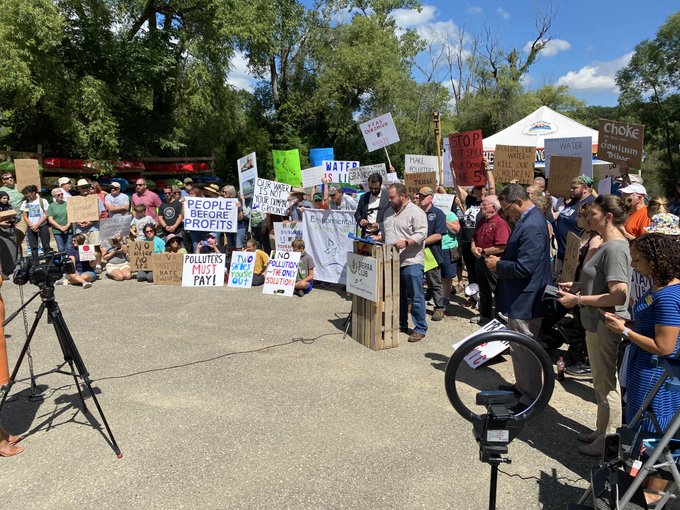HRWC sets policy priorities for protecting the Huron River and watersheds throughout Michigan

Recent events have ignited HRWC’s motivation to advocate for a robust environmental policy agenda. Assaults to the health of the river from PFAS, hexavalent chromium and 1,4-dioxane show troubling limitations in the state’s ability to protect our waterways under current regulations and enforcement policies. A key federal Supreme Court case —Sackett vs. EPA—has the potential to dramatically weaken the Clean Water Act. Approximately half of Michigan’s stream miles have failed to meet water quality standards for E. coli, including in the Huron River watershed. We need to address this bacteria from storm sewer and septic system sources. Our aging water infrastructure such as dams, stormwater and wastewater systems needs to be addressed. Each of these threats requires policy solutions.
Two additional drivers of our emerging policy agenda are our new strategic plan and recent election outcomes. We are committed to making HRWC a policy resource for local governments and enacting river-friendly policies at the state level. HRWC will continue our work with local governments. You will see an added emphasis on state-level advocacy to ensure that the Huron watershed, and watersheds throughout the state, have the policies in place to achieve our mission.
For the first time in more than 40 years, Michigan has a progressive majority in the State House and Senate. While we have not yet seen the new state legislature or the Governor’s office announce their environmental agenda, we are optimistic. Clean water is a nearly universal and nonpartisan concern among voters. We have a unique opportunity to develop new, remove harmful, and fortify existing legislation that prioritizes a healthy environment and clean water.
HRWC’s top five 2023 state-level policy and regulatory priorities
Contaminant prevention and clean up (also known as “polluter pay” laws)
HRWC wants stronger incentives for prevention and requirements for cleaning up releases of toxic chemicals to our environment. Further, regulatory agencies need strengthened authority to implement these laws; including additional funding, stronger mandates, support to deny high-risk permits, and the ability to levy higher penalties associated with violations.
Stormwater utilities
Michigan’s water infrastructure is in disrepair and is unable to handle the more extreme events climate change is causing. There is a huge gap between the infrastructure needs of our stormwater systems and the funding available to make those investments. Stormwater utilities are an excellent way to close the funding gap and build a resilient system that protects people, property, and natural resources from the impacts of stormwater.
Septic systems
Michigan is one of few states that does not have a statewide septic code to ensure that private septic systems are inspected and maintained. As a result, aging septic systems contribute to both nutrient and bacterial contamination of our surface and groundwater.
Land protection
To maintain both a hospitable climate and a healthy river system, we must maintain as much of our remaining natural lands as possible. There are multiple state-level policy actions that would support this; including, easing access to Natural Resources Trust Fund and State Revolving Loan Fund monies for land protection, adopting statewide setbacks that limit development adjacent to waterways, and adopting ambitious global initiatives like 30 by 30 that aims to protect 30% of the planet from development by 2030.
Dam removal and flow management
Most dams are relics of a past use and are beyond their intended lifespan. By removing these obsolete obstructions, we restore our flowing ecosystems while eliminating both the financial liabilities for dam owners and the safety hazards dams pose to communities. We also need stronger language in Michigan’s Lake Level Control Act to allow dam operators more flexibility to manage flow to reduce flood risk and impacts of drought. Learn more at HRWC’s dam and impoundments program.
State policy can either help or hinder our ability to protect the Huron River. Now is the time to make the changes that will protect our environment for years to come.
HRWC is ready to take on this work with our fellow watershed groups, other environmental organizations, our elected officials, and you.
Let’s get it done!
—Rebecca
Follow me on Twitter @NatureIsWater.
This blog post is also published in the Huron River Report, Spring 2023.



